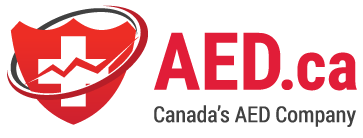In an emergency, every second counts. When someone experiences a cardiac arrest, immediate action can mean the difference between life and death. This is where an Automated External Defibrillator (AED) comes into play. Here are compelling reasons why having an AED is a vital investment for homes, businesses, and public spaces.
1. The Statistics Don’t Lie
According to the American Heart Association, nearly 350,000 cardiac arrests occur outside of hospitals each year in the U.S. The survival rate for those who receive immediate CPR and defibrillation is significantly higher—around 38%. An AED can increase the chances of survival, particularly if it’s used within the first few minutes of cardiac arrest.
2. Ease of Use
One of the most significant advancements in medical technology is the AED’s user-friendly design. These devices provide step-by-step audio and visual instructions that guide even untrained bystanders through the process of using them. You don’t need to be a medical professional to operate an AED; just follow the prompts, and you can potentially save a life.
3. Portable and Accessible
AEDs are designed to be portable, making them easy to store in homes, offices, gyms, and public spaces. The accessibility of these devices is crucial—having an AED nearby can drastically reduce response times, which is critical during emergencies. Ensuring that AEDs are available in your community can foster a culture of preparedness.
4. Training Opportunities
While AEDs are user-friendly, receiving training on how to use them in conjunction with CPR can further improve the chances of survival in a cardiac emergency. Many organizations offer training programs that teach individuals how to recognize the signs of cardiac arrest, perform CPR, and use an AED effectively. Training not only empowers individuals but also builds community resilience.
5. Peace of Mind
Having an AED on hand provides peace of mind. Whether you’re a business owner looking to ensure employee safety or a parent concerned for your family, knowing that you have the tools to respond to a cardiac emergency can alleviate anxiety. This sense of security can enhance your overall quality of life.
6. Community Responsibility
Investing in an AED is not just a personal choice; it’s a community responsibility. Businesses and organizations that equip themselves with AEDs demonstrate a commitment to health and safety. Additionally, encouraging public access to AEDs can foster a sense of community awareness and preparedness, ultimately leading to safer neighborhoods.
7. Cost-Effective Lifesaver
While there is an upfront cost associated with purchasing an AED, consider it an investment in life. The average cost of an AED ranges from $1,900 to $2,500, depending on the model and features. Many AEDs come with a warranty and require minimal maintenance. In comparison to the potential cost of a life lost or a family impacted by a sudden cardiac arrest, the expense is relatively small.
Conclusion
The importance of having an AED cannot be overstated. It’s a proactive measure that enhances safety in homes, workplaces, and public spaces. With the capability to save lives, ease of use, and accessibility, an AED is a critical component of emergency preparedness. Consider making this lifesaving investment today—your community and loved ones could depend on it. AED.ca is here to help. Please check out line of AEDs @ aed.ca/collections/aeds
AED Canada
Canada AED
Where to buy an AED in Canada






